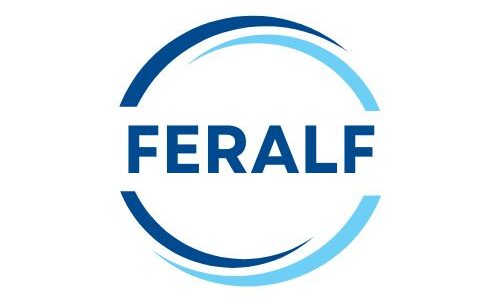When your child struggles in a traditional classroom setting, you might wonder if there are better options available. Special education exists to ensure that every child, regardless of their learning differences or disabilities, receives an appropriate education tailored to their unique needs.
Special education is a federally mandated program that provides individualized instruction and support services to students with disabilities. Under the Individuals with Disabilities Education Act (IDEA), schools must identify, evaluate, and serve eligible students from birth through age 21. This isn’t about placing children in separate classrooms—modern special education focuses on inclusion, support, and helping students reach their full potential.
Understanding special education can feel overwhelming, especially when navigating acronyms, legal requirements, and educational jargon. This guide breaks down everything you need to know about special education services, eligibility requirements, and how to advocate for your child’s needs.
Who Qualifies for Special Education Services?
Not every child who struggles academically qualifies for special education. To be eligible, a student must meet two key criteria: they must have a disability that falls under one of the 13 categories defined by IDEA, and that disability must adversely affect their educational performance.
The 13 disability categories include:
Cognitive and Learning Disabilities:
- Specific Learning Disability (like dyslexia or dyscalculia)
- Intellectual Disability
- Multiple Disabilities
Physical and Sensory Impairments:
- Visual Impairment (including blindness)
- Hearing Impairment (including deafness)
- Deaf-Blindness
- Orthopedic Impairment
- Other Health Impairment (like ADHD, epilepsy, or diabetes)
Communication and Behavioral Conditions:
- Speech or Language Impairment
- Autism Spectrum Disorder
- Emotional Disturbance
- Traumatic Brain Injury
Each category has specific criteria that qualified professionals use during the evaluation process. For example, a child with ADHD might qualify under “Other Health Impairment” if their condition significantly impacts their ability to learn in a general education setting.
The Special Education Process: Step by Step
Getting special education services involves several steps designed to protect both students and families. Understanding this process helps you know what to expect and when to ask questions.
Referral and Initial Evaluation
The process typically begins when a parent, teacher, or other professional notices that a child is struggling. Anyone can request an evaluation, but parents must provide written consent before the school can begin testing.
The evaluation must be comprehensive and examine all areas of suspected disability. This might include cognitive testing, academic assessments, behavioral observations, and input from multiple professionals like psychologists, speech therapists, or occupational therapists.
Schools have 60 calendar days from when they receive parental consent to complete the evaluation. During this time, they’ll gather information about your child’s strengths, needs, and how their disability affects their learning.
Eligibility Determination
Once testing is complete, a team of qualified professionals reviews the results to determine if your child qualifies for special education services. This team includes special education teachers, general education teachers, school psychologists, and other specialists as needed.
If your child qualifies, the team will also determine their primary disability category and specific areas of need. This information becomes the foundation for developing their educational program.
Developing the IEP
Students who qualify for special education receive an Individualized Education Program (IEP). This legal document outlines your child’s current performance levels, annual goals, and the specific services they’ll receive.
The IEP team includes parents, teachers, special education professionals, and when appropriate, the student themselves. Everyone works together to create a plan that addresses your child’s unique needs while ensuring access to the general education curriculum.
Understanding IEPs and 504 Plans
Two main types of plans provide educational support for students with disabilities, and understanding the difference helps you advocate for the right services.
Individualized Education Programs (IEPs)
IEPs are comprehensive legal documents required for students who qualify for special education under IDEA. These plans include:
- Present levels of academic and functional performance
- Measurable annual goals
- Special education and related services (like speech therapy or counseling)
- Accommodations and modifications
- Details about participation in general education settings
- Transition planning for students 16 and older
IEP teams meet at least annually to review progress and update goals. Parents are equal members of this team and have the right to request meetings when concerns arise.
Section 504 Plans
Students who have disabilities but don’t qualify for special education might receive a 504 plan under Section 504 of the Rehabilitation Act. These plans focus on providing accommodations that ensure equal access to education.
504 plans are typically shorter and less detailed than IEPs. They might include accommodations like extended time on tests, preferential seating, or modified assignments. Unlike IEPs, 504 plans don’t require specialized instruction or related services.
Related Services and Support Options
Special education extends beyond classroom instruction. Related services help students benefit from their educational program and might include:
Therapeutic Services:
- Speech-language therapy
- Occupational therapy
- Physical therapy
- Counseling services
Support Services:
- Transportation (including specialized buses)
- Assistive technology
- Nursing services
- Interpreter services
Educational Support:
- Paraprofessional assistance
- Modified curriculum
- Behavior intervention plans
- Transition services for post-secondary planning
The IEP team determines which services each student needs based on their individual requirements. Services should be provided in the least restrictive environment possible, meaning students spend as much time as appropriate in general education settings.
Advocating for Your Child’s Needs
Parents play a crucial role in their child’s special education journey. Effective advocacy starts with understanding your rights and building collaborative relationships with school personnel.
Keep detailed records of your child’s progress, challenges, and any communications with school staff. Document concerns with specific examples and dates. This information becomes valuable during IEP meetings and helps track your child’s development over time.
Ask questions when you don’t understand something. Request explanations of testing results, IEP goals, or proposed services. You have the right to obtain independent evaluations if you disagree with the school’s assessment.
Consider bringing a support person to IEP meetings. This might be a spouse, advocate, or professional who can help you process information and ask relevant questions. Having support helps you focus on your child’s needs without feeling overwhelmed by the process.
Moving Forward with Confidence
Special education provides essential services that help students with disabilities access their education and develop crucial life skills. While the process can seem complex, remember that these protections exist to ensure your child receives appropriate support.
Start by familiarizing yourself with your state’s special education resources and parent training centers. These organizations offer workshops, guidance, and support throughout your journey. Connect with other parents who have navigated similar experiences—their insights and encouragement can be invaluable.
Most importantly, maintain high expectations for your child. Special education is about providing the right support so students can reach their potential, not limiting what they can achieve. With proper services and advocacy, students with disabilities can succeed academically and develop the skills they need for meaningful adult lives.











